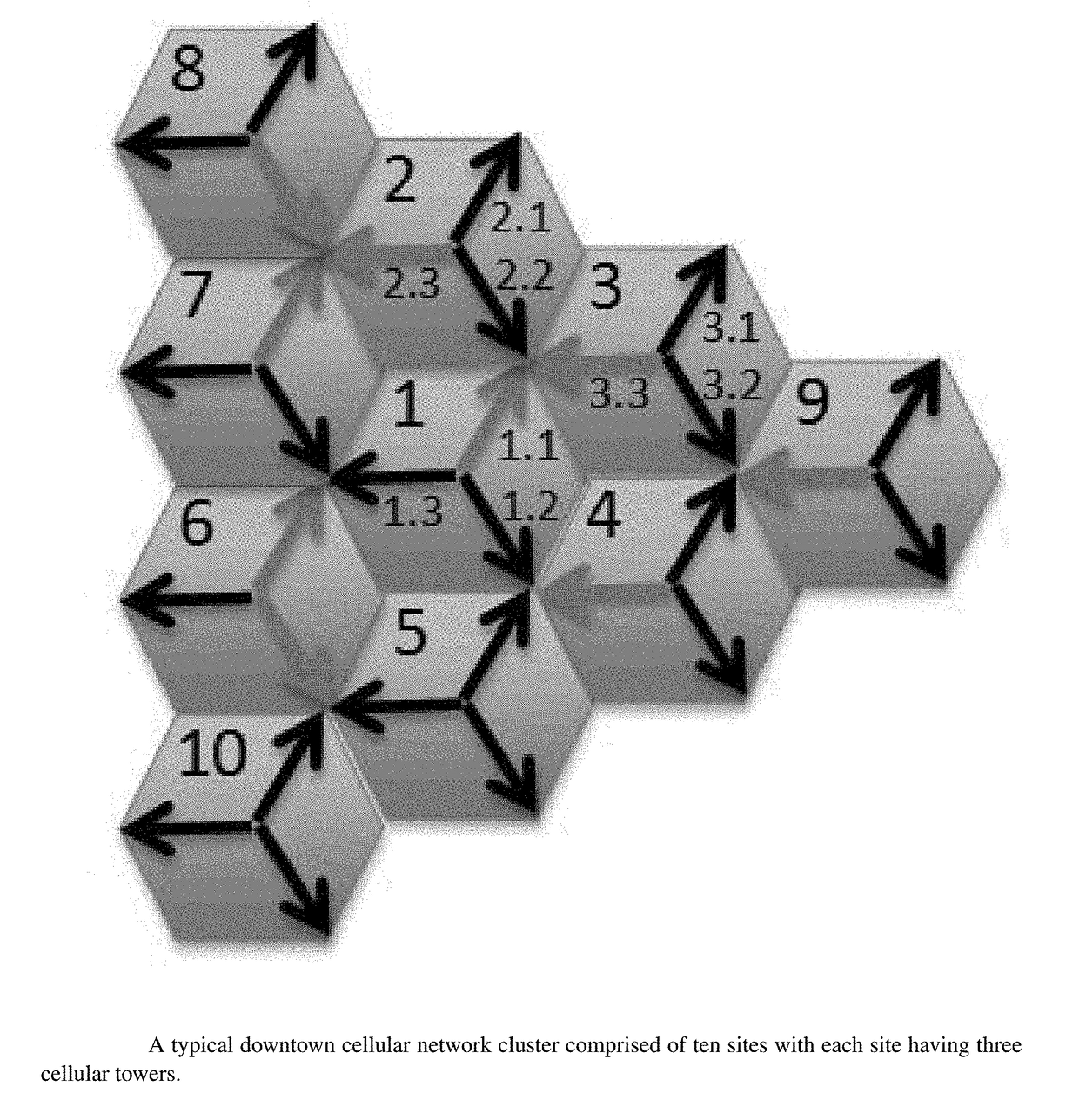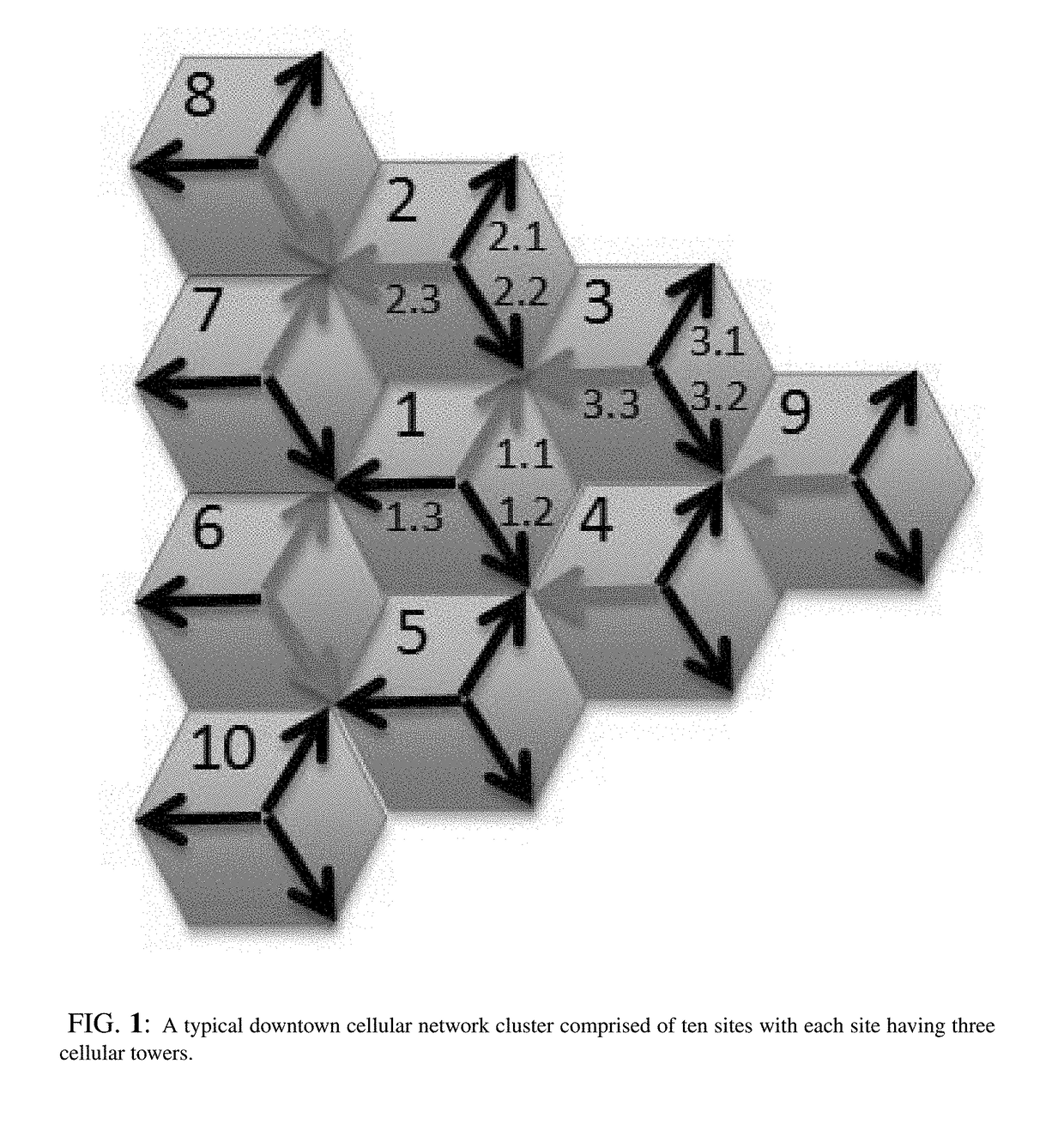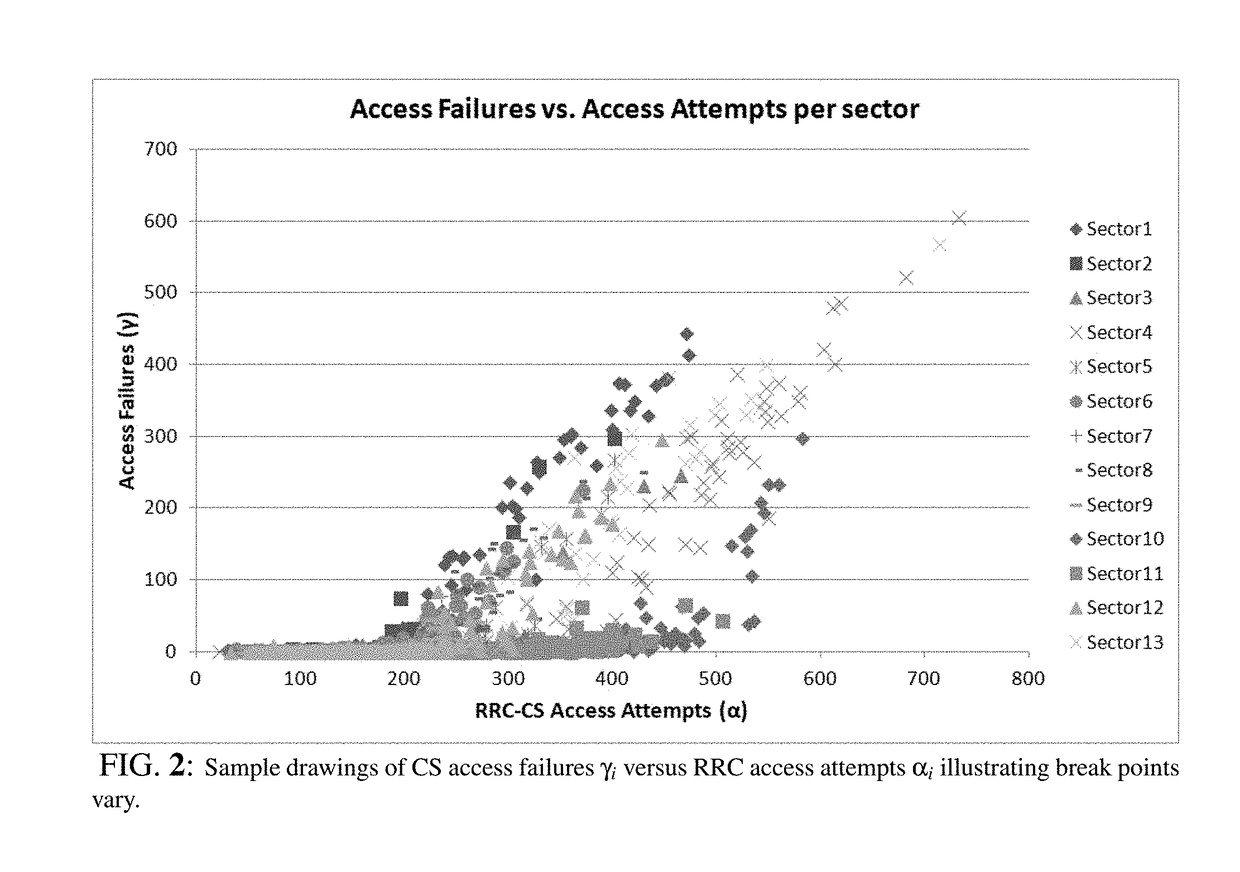Learning-constrained optimal enhancement of cellular networks capacity
a cellular network and capacity enhancement technology, applied in the field of learning constraints, can solve the problems of maximizing the number of served users while maintaining an acceptable quality of service (qos), the capacity challenge of cellular networks, and the difficulty of processing hardware elements, so as to achieve the effect of effectively predicting capacity limits and improving the capacity of such networks
- Summary
- Abstract
- Description
- Claims
- Application Information
AI Technical Summary
Benefits of technology
Problems solved by technology
Method used
Image
Examples
Embodiment Construction
[0056]In an embodiment of the presented modeling and optimization of capacity algorithms, a 3G cellular network cluster illustrated in FIG. 1 is used. This embodiment represents a typical major US city downtown area. The cluster is comprised of ten sites with each site having three cellular towers covering hundred and twenty degrees and presented by arrows pointing at three different directions. For a given operation scenario, cells in red represent congested cells while cells in black represent non-congested cells.
[0057]In some embodiments, the present invention presents a solution to capacity optimization by first predicting the breakpoints of each cell tower thereby avoiding degradation of neighboring cells offered quality as the result of offloading users from congested cells. Utilizing the predicted breakpoints as operational constraints, the optimal configurations of parameters Ωi and Φi with iε{1, . . . , N} that maximize traffic offloading are identified for the plurality of...
PUM
 Login to View More
Login to View More Abstract
Description
Claims
Application Information
 Login to View More
Login to View More - R&D
- Intellectual Property
- Life Sciences
- Materials
- Tech Scout
- Unparalleled Data Quality
- Higher Quality Content
- 60% Fewer Hallucinations
Browse by: Latest US Patents, China's latest patents, Technical Efficacy Thesaurus, Application Domain, Technology Topic, Popular Technical Reports.
© 2025 PatSnap. All rights reserved.Legal|Privacy policy|Modern Slavery Act Transparency Statement|Sitemap|About US| Contact US: help@patsnap.com



